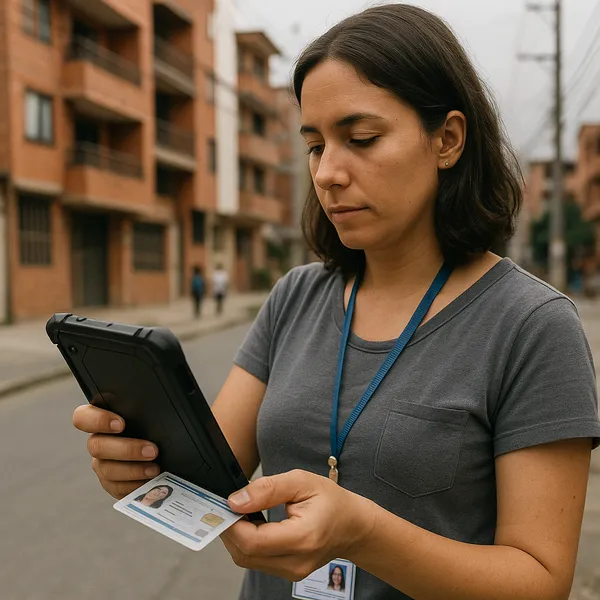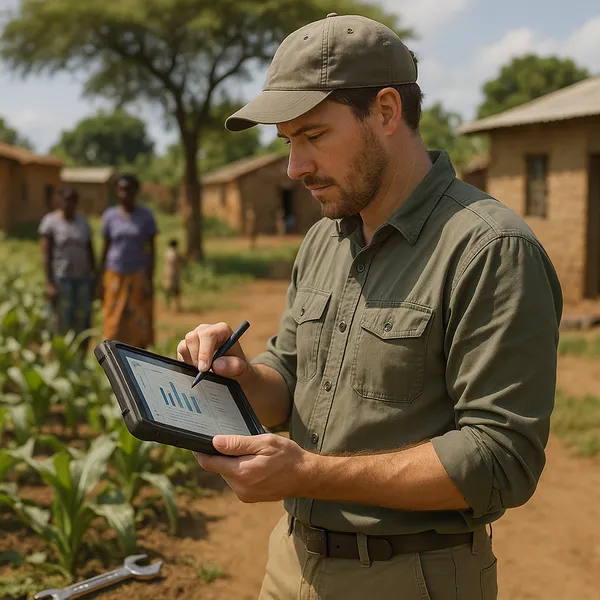Physical Verification Best Practices
Published on: Thu Jun 20 2024 by Ivar Strand
Seeing is Believing: Best Practices in the Physical Verification of Assets and Activities
Introduction
While financial records provide a crucial trail of expenditure, physical verification provides the ground truth. It is the component of monitoring that moves beyond spreadsheets and ledgers to answer the fundamental question: “Did the project deliver what it promised on the ground?” Without this step, there is no definitive link between spending and achievement.
The adage “seeing is believing” is the foundation of fiduciary assurance. However, the method of seeing must be rigorously adapted to what is being verified. Confirming the existence and quality of a newly built school requires a different methodology than verifying a cash transfer to a vulnerable household or the delivery of a public health training session. This paper outlines a structured approach to physical verification, categorized by the type of output being monitored.
1. Verifying Infrastructure and Civil Works
This category includes tangible, fixed assets like schools, health clinics, roads, bridges, and water systems. The verification process must assess not just existence, but also location, quality, and functionality.
- Key Verification Questions: Does the structure exist at the planned location? Was it built according to the agreed-upon technical specifications and quality standards? Is it complete and functional for its intended purpose?
- Methodology:
- Location and Existence: Verification begins with a site visit to the exact coordinates specified in the project plan, confirmed by GPS.
- Quality Assurance: This is the most critical step. It involves a detailed comparison of the completed structure against the project’s Bill of Quantities (BoQ) and engineering designs. This often requires personnel with technical expertise (e.g., civil engineers) to assess factors like the quality of concrete, the grade of steel used, and the integrity of the construction.
- Functionality Testing: A completed asset must be tested. A well must be pumped to ensure it produces clean water at the required flow rate. A solar-powered clinic must have its electrical systems tested to confirm they can power the necessary equipment. Verification is not complete until functionality is proven.
2. Verifying Goods and Commodities
This category covers movable assets such as medical supplies, food aid, agricultural inputs (seeds, tools), and educational materials. Verification must confirm quantity, quality, and the integrity of the supply chain.
- Key Verification Questions: Was the correct quantity of goods delivered? Do the goods meet quality standards (e.g., not expired or damaged)? Are they stored correctly? Did they reach the intended final distribution point?
- Methodology:
- Quantity and Quality Checks: This involves physical counts at warehouses or distribution points, cross-referenced with waybills and stock records. Monitors also conduct quality inspections, such as checking expiration dates on medicines, confirming the specification of IT equipment, or assessing for damage to food supplies.
- Storage Assessment: An inspection of the storage facility is crucial. This includes checking for proper temperature control for a medical cold chain, adequate security to prevent theft, and protection from weather and pests.
- Supply Chain Spot-Checks: To check for diversions or “leakage,” monitors can trace a specific consignment from a central warehouse down to a local clinic or school, verifying records at each stage.
3. Verifying Activities and Services
This is often the most challenging category as it involves verifying intangible outputs like training workshops, public health awareness campaigns, or agricultural extension services.
- Key Verification Questions: Did the event or service actually take place at the specified time and location? Were the intended participants present? Was the planned content delivered to a reasonable standard?
- Methodology:
- Direct Observation: Whenever possible, monitors should attend a random sample of events to observe the process directly. This provides incontestable proof that the activity occurred.
- Record Review: Post-event, monitors review documentation such as attendance sheets, training curricula, and facilitators’ reports.
- Participant Follow-up: This is a crucial step to validate the records. Monitors conduct confidential interviews with a sample of individuals from the attendance list. These interviews confirm their actual presence, their understanding of the topic, and their perception of the activity’s quality. This is the most reliable method for detecting “ghost” trainings.
4. Verifying Transfers to Individuals
This category includes cash and voucher assistance (CVA) and direct in-kind distributions to households. Verification focuses on ensuring the transfer reached the correct person in the correct amount.
- Key Verification Questions: Did the intended beneficiary receive the transfer? Did they receive the full, correct amount or set of items? Was the process clear, safe, and dignified? Were any unofficial “fees” or payments solicited?
- Methodology:
- Beneficiary Confirmation: Using official distribution lists, monitors visit a statistically significant sample of registered beneficiaries, typically in their homes to ensure a confidential setting.
- Identity and Receipt Verification: The monitor confirms the identity of the beneficiary and, through a careful and sensitive interview, confirms that they received the transfer, the amount they received, and the date of receipt. This direct confirmation is the only way to reliably verify the final link in the chain.
Beyond Existence: Verification as Quality Assurance
Ultimately, rigorous physical verification is more than a simple headcount or a check for existence. It is a multi-faceted process of quality control that must be tailored to the specific nature of the output. The goal is to provide assurance not just that something was delivered, but that the right thing was delivered, in the right quantity and of the right quality, to the right people. This comprehensive, evidence-based view is what constitutes true verification and underpins genuine value for money.



